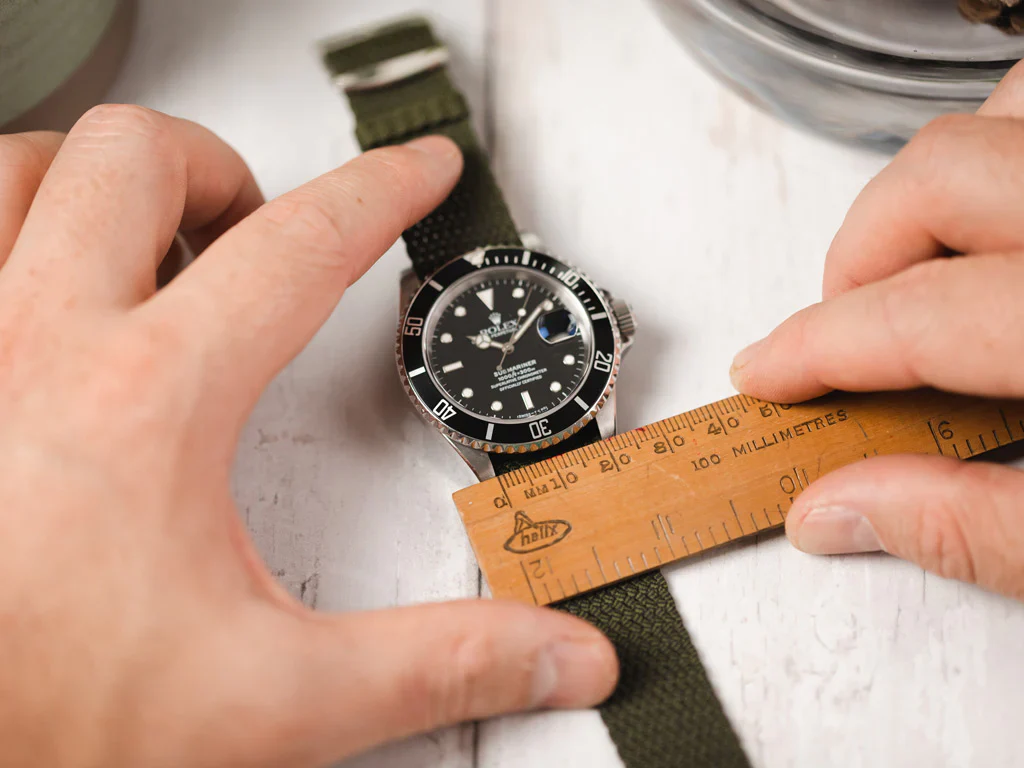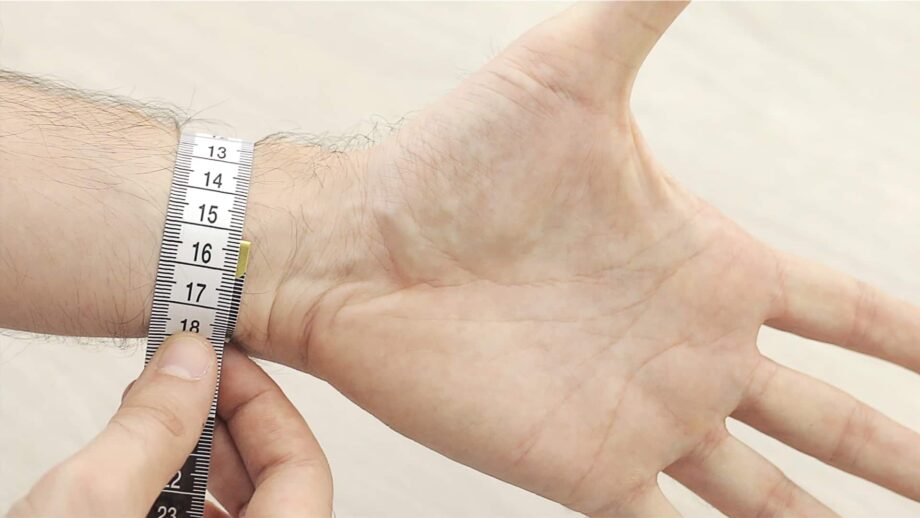Accurate wrist size is perhaps the most important aspect when choosing a watch. It offers the best comfort, always looks nice and enhances the style as it is easier to wear for long periods of time.
Whether you’re buying a watch as a present for someone or for yourself, the first step is to measure your wrist size.
Understanding how to correctly measure your wrist and finding your perfect fit will direct you in the right direction of your dream watch.
Therefore, this guide will provide you with the necessary information to get your wrist size measured and also understand the sizes of other watches. It will also help you to determine your perfect watch based on your wrist size.
Why Wrist Size Matters
The fit of a watch often comes down to how it fits your wrist. A watch too large for your wrist could slip around, one too small could dig in uncomfortably or inhibit your movement. In addition, some watches may be more sporty, dressy or casual, and these often come with specific design elements that could impact the overall look and feel of the watch for you. If you know your wrist size, you’ll be able to pick up your ideal watch with ease.
Tools You Will Need
Before you begin measuring, gather the following tools:
1. Plushy Measuring Tape: Soft measuring tape, such as what you might use for sewing, will work perfectly wrapped around your wrist.
2. String or Paper Strip: If your measuring tape is not bendable, you can use a strip of string or a piece of paper. You will also need a ruler to measure its length.
3. Pen or Marker: To mark measurements if you’re using a string or paper.
4. Ruler: For measuring the length of the string or paper.
Steps to Measure Your Wrist Size
Step 1: Prepare Your Wrist
For the most accurate measurement, make sure your wrist is in a resting position (not flexed or extended), and not inflamed. After vigorous physical activity, your wrist size can increase due to the expansion of the blood vessels supplying the area.
Step 2: Use a Flexible Measuring Tape
1. Wrap the Tape Around Your Wrist : Take the flexible measuring tape and wrap it around the smallest part of your wrist, just above the wrist bone. Make sure the tape is snug but not too tight—there should be no indentations on your skin.
2 . Read the Measurement: After you’ve pulled snug on the tape, note the measurement where you see the tape overlapping. That number (your wrist size) is either in centimetres or inches.
Step 3: Using String or Paper
If you don’t have a measuring tape:
1. Wrap the String/Paper: Wrap the string or paper strip around your wrist the same way you wound the tape. Mark where the end intersects the string/paper.
2. Lay the Tape/Pattern/String/Paper Out Flat and Measure the Length Using a Ruler From the starting point to the mark is your wrist size.
Step 4: Measure Multiple Times
To be sure that your results are precise, try measuring it a couple of times and take the average – or at least a form that occurs more often.

Understanding Watch Sizes
Wrist size is relative, so wristwatch sizes are typically classified by case diameter and thickness. Here’s how to work around them:
1. Watch Case Diameter :
– Small (30mm — Smaller wrists: Typically favoured by those who like a restrained, discreet look
– Medium (36mm to 42mm): A good allrounder, suitable for men and women that manages to walk the line between walloping and subtle.
– Large (42mm and above): Good for big wrists, or if you want a conversation starter!
2. Pay Attention to Case Thickness :
A thicker watch might feel bulkier on your wrist. Always look at the measurements and keep in mind your wrist size in order not to overdo the thickness and end up feeling uncomfortable.
3. Band Width :
The case size should dictate the width of the watch band. For the most part, large watches need big bands, and smaller watches do better with thinner bands.
Watch Fit Types
When selecting a watch, consider the type of fit you prefer:
1. Loose Fit: A watch that can ‘rattle’ on your wrist a bit – that means that it slides on your wrist ever so slightly, but not too much that the watch becomes unstable.
2. Comfort Fit : This is the most common preference. The watch should fit comfortably on your wrist without digging in or slipping.
3. Tight Fit : Some people like a tighter fit for the extra security. However, this can be uncomfortable to wear for long periods of time, and caution should be taken with it.
Choosing the Right Watch
Have now taken your wrist size and have acquired a sense of watches sizes it’s the time to purchase a watch. Regarding this the tips are:
1. Style: Think about your lifestyle and personal style. Are you looking for a sporty, formal or casual look? Different styles come in different sizes and in different materials.
2. Material: The material makes a watch heavier or lighter and more comfortable: A metal band weighs more and feels heavier on your wrist than a fabric or leather band, which is lighter and more flexible.
3. Features: Determine what features you need: is it water resistance? A chronograph? ‘Smart’ features? These can impact the size and weight of the watch.
4. Try It Before You Buy It: Go into stores to wear the watch on your wrist. No matter how much you read about the size of different watches, or look at images online, nothing beats seeing and feeling it for yourself, to get a sense of how the proportions will look on your own wrist.
5. Adjustability: Many watches have adjustable bands. If your wrist size falls in between two sizes, go for a watch with an adjustable strap for the best fit.
Final Thoughts
It’s the first – and most essential – step to finding a timepiece that fits perfectly on your wrist and compliments your style. The information provided in this guide will undoubtedly make you a – a watch that will look great and sit comfortably on your wrist. Happy watch shopping!

